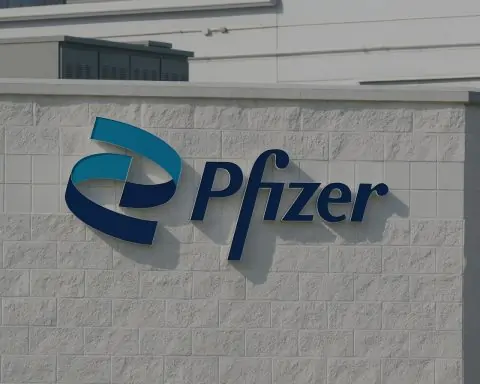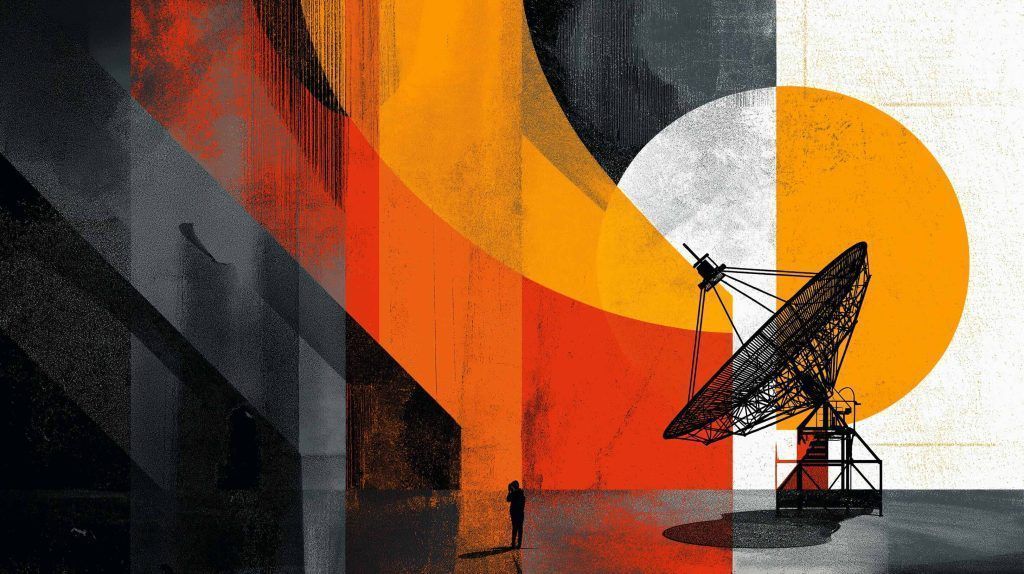- In June 2024, the Supreme Council of the Cultural Revolution approved the National Artificial Intelligence Document, a comprehensive policy blueprint for AI development.
- By July 2024, Iran established the National AI Organization as an independent body under the President’s supervision to steer the AI ecosystem and aim to be among the world’s top 10 AI powers within the next decade.
- In May 2025, Iran’s parliament approved a National AI Plan with an overwhelming majority of 187–33, deeming AI an urgent national imperative.
- At the start of 2025, the government allocated about $115 million USD for AI research and development in the national budget to upgrade computing infrastructure.
- On 15 March 2025, the government publicly unveiled a prototype of a national open-source AI platform (an MVP) led by Vice President for Science and Technology Hossein Afshin.
- The plan envisions Tehran’s first dedicated AI Park by 2027 to showcase developments and provide public-facing AI services, including a GPU farm.
- The Simorgh supercomputer, launched in 2021 and rated at 0.56 petaflops, was Iran’s most powerful AI-focused system and earned the nickname “the black market supercomputer” for its use of smuggled chips.
- The Surena IV humanoid robot was revealed in 2019 and can grip objects, walk stably, and drill, illustrating robotics and AI progress.
- In May 2025, Tehran judiciary announced it uses AI to map and track complex financial networks in fuel-smuggling cases.
- In 2025 Iran aims to educate one million schoolchildren in AI for 2025–26, train 100,000 teachers in Summer 2025, and make AI a compulsory discipline in all universities.
Introduction: Iran has entered a new phase in its artificial intelligence (AI) journey, marked by ambitious national strategies, growing research output, and a vibrant startup ecosystem. Despite international sanctions and infrastructure challenges, the country aspires to become a top-tier AI nation within the next decade [1] [2]. Iranian leaders – including Ayatollah Khamenei – have explicitly set a goal for Iran to rank among the world’s top 10 AI powers, backed by plans for significant investment (reportedly around $8 billion) [3]. Recent developments span government policy initiatives (a National AI Strategy and Organization), major educational programs, an expansion of AI-focused startups, and even military applications. Experts note Iran’s strong human capital and scientific output as key advantages, while also cautioning that sanctions-induced obstacles (like limited access to advanced hardware and global AI services) pose ongoing challenges [4] [5].
Government Policies and National AI Strategy
Iran’s government has moved assertively to formulate a cohesive AI policy framework. In June 2024, the Supreme Council of the Cultural Revolution approved the “National Artificial Intelligence Document”, a comprehensive strategy blueprint for AI development [6]. Shortly thereafter, this plan was officially issued for implementation, mandating the creation of new governance structures [7]. By July 2024, Iran established a National AI Organization as an independent body under the President’s supervision [8]. According to officials, this organization is tasked with steering Iran’s AI ecosystem and ensuring the country can “become one of the top 10 AI leaders globally within the next decade” [9]. The Seventh National Development Plan also explicitly called for setting up a national AI authority, developing a “trustworthy AI ecosystem,” building ethical and legal infrastructure, and raising public awareness about AI [10].
In May 2025, Iran’s parliament (Islamic Consultative Assembly) debated and approved a National AI Plan to accelerate implementation of these goals [11] [12]. The bill passed with an overwhelming majority (187–33) amid recognition of AI as an “urgent national imperative” by both Parliament and the Supreme Leader [13] [14]. This legislative push came as Iran watched regional rivals (notably Saudi Arabia and the UAE) announce massive AI investments and partnerships with Western tech firms [15] [16]. Iranian policymakers argued that delays in government action were costly, and Parliament intervened to jump-start progress, even as the administration prepared its own AI bill [17] [18]. The approved plan seeks to expand Iran’s AI infrastructure and talent pipeline, and it complements earlier government initiatives rather than replacing them [19]. (Notably, some overlap exists with bodies like the Supreme Council of Cyberspace and the Vice Presidency for Science and Technology, raising concerns about duplication [20] [21]; efforts are underway to coordinate these roles through a dedicated commission.)
Funding and Infrastructure: At the beginning of 2025, Iran’s government committed substantial funding specifically for AI. About $115 million USD was allocated to AI research and development in the national budget [22] [23]. This injection of funds aims to upgrade computing infrastructure and support strategic projects. Indeed, Iran is planning its first dedicated “AI Park” in Tehran by 2027 to showcase technological developments and provide public-facing AI services [24] [25]. The AI Park will house part of the country’s processing infrastructure (e.g. a GPU farm) and offer cloud computing resources to researchers, startups, and even ordinary citizens who need AI processing power [26] [27]. According to Mojtaba Alizadeh of the Vice Presidency for Science and Technology, the park’s mission is to make advanced AI tools widely accessible and to demonstrate Iran’s achievements in fields like IoT, data analysis, and the national AI platform [28] [29]. Such infrastructure projects align with Iran’s drive for technological sovereignty – exemplified by the National Information Network (an internal internet) – to ensure continuity of AI development even if cut off from global services [30] [31].
National AI Platform: A centerpiece of Iran’s recent AI effort is the development of a national open-source AI platform. On 15 March 2025, the government publicly unveiled a prototype of this platform (an MVP release) [32] [33]. Vice President for Science and Technology Hossein Afshin, who leads the project, described it as the beginning of a journey toward “technological justice” – ensuring equal AI access for all Iranians. “This is not just a tech launch; we have handed the open-source future to every child of Iran. A student in a remote village and a researcher in Tehran will now benefit equally from AI,” Afshin said at the unveiling [34] [35]. The platform is entirely built with domestic expertise and without reliance on foreign APIs, aiming to make Iran “a member of the global AI club” on its own terms [36]. It provides a suite of AI services (from language models to data analytics) that developers, companies, and government agencies can use within Iran’s national network.
Afshin outlined a roadmap through 2025–2026 for iteratively improving the platform [37]. In Q1 1404 (spring 2025), the team began internal testing and optimization of AI products. By mid-2025, select academics and knowledge-based companies gained limited access to perform beta tests and validation [38]. A public beta release is scheduled for September 2025, and the final stable version is planned for March 2026, featuring expanded capabilities and high stability [39] [40]. Notably, development has involved broad collaboration: “The platform’s development was done through an open call, with participation from all universities and 38 knowledge-based companies,” Afshin noted [41] [42]. This inclusive approach has rallied Iran’s tech community around a shared national project. The government is also concurrently working on an “Intelligent Assistants for Government” project, contracting 13 top domestic universities to develop AI assistants for state ministries and officials [43] [44]. This would deploy AI to improve decision-making and administrative efficiency at high levels of government.
Iran’s leadership frames these efforts in geopolitical as well as developmental terms. Building indigenous AI platforms and services is seen as vital for strategic autonomy, reducing reliance on Western tech giants that have at times blocked or banned Iranian access (for example, Apple’s 2017 ban on Iranian apps) [45]. By investing in local innovation, Iran aims to counterbalance Western technological dominance and circumvent sanctions [46] [47]. The National AI Document explicitly ties AI progress to Iran’s broader goals of bolstering “the pillars of a new Islamic civilization” and improving governance quality [48] [49]. It calls for applying AI in all priority domains – from education and health to defense and the economy – in order to drive national advancement [50]. In short, Iran’s government now treats AI development as a strategic imperative, central to future economic growth and national power.
Academic Research and Scientific Output
Iran boasts a strong academic foundation in AI, which underpins its ambitions. AI research is actively pursued at leading universities such as Sharif University of Technology, University of Tehran, Amirkabir University of Technology, Iran University of Science and Technology, and others [51] [52]. While only a few universities have standalone “Artificial Intelligence” departments, many AI-focused research groups exist within electrical engineering, computer science, and computer engineering faculties [53] [54]. These groups specialize in subfields like machine learning, natural language processing (NLP), computer vision, robotics, and data mining [55] [56]. For example, Sharif University hosts renowned labs working on machine learning algorithms, Persian-language NLP, and computer vision, often collaborating with industry on applied projects [57] [58]. The University of Tehran (the nation’s oldest university) likewise has prominent AI researchers focusing on neural networks, intelligent systems, and even social implications of AI [59] [60]. Amirkabir University (Tehran Polytechnic) has integrated specialized AI courses and research projects into its computer engineering program, providing a pipeline for skilled graduates [61]. Major regional universities beyond the capital – such as Ferdowsi University of Mashhad, Isfahan University of Technology, and University of Tabriz – have also ramped up AI research in areas ranging from image processing and recommender systems to industrial robotics [62] [63].
Thanks to this robust academic activity, Iran has become a leading AI research producer in West Asia. By one analysis, Iran ranked second in the region (and first among Islamic countries) for the number of AI-related scientific publications as of 2023 [64] [65]. In fact, a report based on the Web of Science database showed that Iran published 2,638 AI documents from 2013 to 2022, placing it 14th worldwide for volume of AI research output [66]. This output exceeded that of several advanced economies; for instance, Iran’s global AI publication ranking was higher than Russia’s and Brazil’s in recent years [67] [68]. Such metrics underscore Iran’s “quiet” strength in fundamental AI research and talent training. Observers note that Iran’s achievement is remarkable given limited resources: “Iran ranks 13th globally in AI, outpacing countries like Brazil,” Shanbe Magazine reports, highlighting how the government touts AI as a way to defy sanctions and achieve technological independence [69]. The Supreme Leader’s emphasis on AI has indeed spurred a flurry of government-led activity to develop a national strategy and support research programs [70].
Specific homegrown innovations illustrate Iran’s research capabilities. One much-publicized project is the Surena humanoid robot series developed at University of Tehran. The latest version (Surena IV, revealed in 2019) can perform complex movements like gripping objects, walking stably, and drilling, showcasing advances in robotics and AI integration [71] [72]. Another success story is Balad, a Persian-language mapping and navigation app that uses AI for route-finding and voice guidance [73]. Balad gained millions of users after Google Maps became less accessible in Iran due to sanctions, demonstrating the local AI industry’s ability to fill gaps with indigenous solutions [74]. Iranian researchers have also built notable supercomputing infrastructure for AI: the “Simorgh” supercomputer, launched in 2021, was Iran’s most powerful supercomputer (rated at 0.56 petaflops) and was intended for AI tasks like image and voice processing [75]. Simorgh infamously had to rely on “smuggled American chips” due to export restrictions, earning the nickname “the black market supercomputer” [76] [77]. This illustrates the lengths Iranian labs go to acquire hardware for AI research. Even so, Iran’s academic AI ecosystem is internationally connected to some degree: Iranian scientists frequently publish in global journals and have joined competitive conferences. In January 2025, Tehran hosted an International Conference on AI and Future Civilization, with participation from over 20 domestic universities and 30 top global universities (including invited experts from China, Italy, Russia, Malaysia, Singapore, and others) [78] [79]. Such events facilitate knowledge exchange and signal Iran’s intent to remain engaged with the worldwide AI research community.
Iran’s academic prominence in AI is, however, partly contrasted by its government’s AI readiness ranking. A 2024 Oxford Insights index (measuring governments’ ability to implement AI in public services) ranked Iran only 94th out of 193 countries [80] [81]. Iran scored reasonably on data and infrastructure availability (its best pillar, at 55.9/100) but much lower on the government pillar (31.5/100) [82] [83]. The low score was attributed in part to the previous absence of a formal national AI policy [84]. Officials expect Iran’s rank to improve once the new AI strategy and organizational structures take effect [85]. In short, Iran’s universities have been punching above their weight in AI research, but translating that strength into deployed public-sector AI systems is an ongoing process. The recent policy steps are meant to bridge this gap by better coordinating academia, industry, and government around AI.
AI Education Initiatives and Talent Development
To sustain long-term growth in AI, Iran is launching major education and workforce development initiatives. A flagship program, announced in early 2025, will introduce AI training in schools at a national scale. Starting from the next academic year (2025–26), one million school students are slated to receive AI education across Iran [86] [87]. Vice President Hossein Afshin stated that the program will target students roughly ages 7 to 15 and will be delivered in a “game-oriented, attractive and practical” manner [88] [89]. The idea is to teach basic AI concepts through interactive games and competitions, sparking interest from a young age. This approach makes learning fun and “encourages students to continue and develop their learning indirectly,” according to Afshin [90]. The curriculum will cover foundational notions of AI (likely basic programming, logic, and problem-solving skills appropriate to each age level). Education officials emphasize that it will familiarize youth with AI in an easy-to-understand way, preparing a future generation fluent in the technology.
Crucially, the plan involves not just students but also teachers. In the summer of 2025, the first phase will train 100,000 school teachers in AI concepts and teaching methods [91] [92]. These educators will learn how to incorporate AI topics into their lessons and guide students in AI projects. By building teacher capacity, the program aims for sustainable, nationwide impact. Afshin has stressed that AI “will become a compulsory discipline in all universities in the country, regardless of the students’ specialty” – indicating that basic AI literacy will be integrated even into non-computer majors at the higher education level [93]. In line with this, universities are expected to expand AI-related coursework so that every student graduates with some understanding of AI tools and ethics. Iran has studied the experiences of countries like China and Russia in rolling out AI education, analyzing their curricula and models to inform its own approach [94]. This international benchmarking is meant to adopt best practices for large-scale AI training.
Beyond formal education, Iran’s government supports a range of programs to cultivate AI talent and awareness among the public. For example, Afshin mentioned plans to create a “smart pathway” in Tehran’s Abbasabad Park – an interactive public installation where people can experience AI firsthand [95] [96]. Visitors will be able to use facial recognition and other AI tech to analyze their own features or see demonstrations of successful Iranian AI projects in a hands-on manner [97] [98]. The goal is to demystify AI for ordinary citizens and inspire young minds by showing practical applications. The Vice Presidency has also organized hackathons and innovation challenges related to AI, often in collaboration with top universities, to spot and support rising talent. Iran’s success in international science and coding competitions (its students frequently excel in math, programming, and robotics Olympiads) provides a strong foundation to build on. The new school-level AI curriculum and teacher training are poised to further widen the pipeline of skilled youth.
Experts view these education initiatives as critical given Iran’s talent retention challenges. The rapid growth of global AI opportunities has led to some brain drain, with top Iranian graduates often pursuing careers abroad for higher salaries and better research facilities [99] [100]. By expanding AI education domestically and creating more local opportunities (through projects like the national AI platform and startup support), Iran hopes to keep more of its bright minds in-country. The demand for AI specialists inside Iran is escalating across industries, which may help absorb new graduates. Reports indicate a dramatic increase in job postings for roles like machine learning engineers, data scientists, and AI researchers in Iran [101] [102]. Large organizations – from finance to healthcare – are beginning to deploy AI for optimization and require skilled personnel [103] [104]. The government’s push means that “AI…will be a compulsory part of higher education for all fields,” ensuring a broad base of literate users and a stream of specialists to meet this demand [105]. Overall, Iran’s education system is being recalibrated to produce the human capital needed for an AI-driven economy.
Startup Ecosystem and AI Industry Growth
Iran’s AI industry is experiencing a surge of startup activity, with an expanding landscape of companies applying AI across sectors. As of 2025, Iran was reported to rank second in the region for its number of AI developers and fourth for its number of AI firms, reflecting the rapid growth of its AI startup ecosystem [106] [107]. This ecosystem is both diverse and resilient. Entrepreneurs are leveraging advances in machine learning and data science to solve local problems – often with impressive ingenuity, given resource constraints. Key domains of innovation include:
- Persian-Language AI and Chatbots: Several startups focus on conversational AI tailored to Persian. Companies like Pishkar Bot, Gap GPT, Chat QT, and Zigap are building sophisticated Persian chatbots for customer service and user interaction [108] [109]. By integrating with popular messaging apps, these chatbots automate customer support, answer queries, and provide services in Persian, filling a crucial niche since most global AI assistants under-serve non-English languages. Mastery of Persian NLP (with its linguistic nuances) gives these startups an edge in the domestic market [110] [111]. Likewise, firms such as Aval AI and Ivira AI offer AI-driven content creation and translation tools for Persian [112] [113] – helping businesses generate high-quality localized content and translate between Persian and other languages. This addresses the growing demand for local-language AI content as more Iranian businesses expand their digital presence.
- Data Analytics and Business Intelligence: Startups like Houshyar 24, Part DP, and Hoosh No are providing AI-powered analytics platforms for enterprises [114] [115]. They use machine learning to turn raw data into actionable insights – for example, analyzing customer behavior, optimizing supply chains, or detecting financial fraud. Such homegrown business intelligence solutions are crucial as Iranian companies modernize operations. They allow decision-makers to leverage data despite not having access to foreign cloud analytics services. The popularity of these tools underscores the market demand for AI in Iran’s private sector, from finance to retail [116].
- Computer Vision, Security, and Smart Cities: In the security realm, a startup like Rakhsh AI is harnessing AI for video surveillance and object detection [117] [118]. Its platform can perform real-time facial recognition, monitor CCTV feeds, and alert for anomalies – technology being piloted for both public safety and industrial uses. Given Iran’s large cities and security concerns, such AI solutions are seen as valuable for augmenting law enforcement and traffic management. The government itself has employed AI in this area: Tehran’s traffic cameras and computer vision systems were used to enforce hijab laws (flagging car drivers with dress code violations via apps like Snapp), illustrating how AI is integrated into surveillance and social control mechanisms [119] [120]. While controversial, it shows technical capability in deploying AI for smart-city monitoring.
- Advanced NLP and AI Services: Some Iranian startups aim at the cutting edge of AI research. For instance, AI Root specializes in advanced information retrieval and NLP tools [121] [122]. They build high-accuracy text processing engines, search algorithms, and data extraction tools optimized for Persian script and context. These services can be licensed by larger IT companies or used in enterprise software, embedding Iranian-developed AI modules in broader applications. Additionally, Iran’s tech community has produced its own versions of generative AI models – for example, “ParsGPT” was an early Iranian effort to create a Persian-language GPT-style model, and various groups have open-sourced Persian NLP models to ensure Iran keeps pace with global AI advancements.
The market impact of Iran’s AI startups is increasingly significant. Officials estimate that the annual market size of Iran’s AI ecosystem (the value of AI products and services) could reach 40 “hamt” (approximately 40 trillion tomans, or about $8–10 billion USD at unofficial rates) in the near term, and potentially exceed 100 hamt with further growth [123]. (By comparison, one expert noted that without the new national platform and ecosystem support, Iran’s current AI market was likely under 2 hamt – meaning the new initiatives could 20× or more the market size [124] [125].) This reflects expectations of a boom as AI solutions gain wider adoption in healthcare, agriculture, finance, and beyond. Already, Iranian startups are deploying AI in creative ways: for example, an Iranian health-tech startup uses AI to help diagnose infertility at home via analysis of medical images [126]. In banking, AI algorithms are being used for risk assessment and fraud detection by major financial institutions [127] [128]. E-commerce platforms in Iran employ AI recommender systems to personalize shopping experiences, much like their global counterparts. Even Iran’s public sector is tapping local AI talent – in May 2025 the Tehran judiciary announced it is using AI to map and track complex financial networks in fuel smuggling cases, which helps investigators detect illicit money flows more efficiently [129].
Iran’s startup scene benefits from a relatively well-educated, affordable talent pool. The country produces many engineering and computer science graduates, and salaries for developers are lower than in Western markets, giving Iranian firms a cost advantage [130] [131]. Iran reportedly has the second-largest pool of AI developers in the region [132]. This combination of talent and cost has led some to label Iran the “Silicon Persia” of the Middle East [133] [134]. According to a geopolitical tech report, “Iran has witnessed a surge in AI-focused startups… integrating AI across diverse industries such as healthcare, security, e-commerce, and agriculture” [135]. The same report noted that Iran’s count of AI companies ranks 4th regionally, signaling that Iran is emerging as an AI hub in the Middle East [136].
That said, Iranian startups face significant challenges. International sanctions limit access to foreign investment and partnerships – Iranian AI entrepreneurs cannot easily buy cutting-edge GPUs or use cloud platforms like AWS/GCP, nor can they scale globally due to financial restrictions [137] [138]. Venture capital is available domestically to some extent (often through government-affiliated funds or semi-private investors), but large-scale funding rounds are rare. Economic instability and high inflation also increase business risks. Moreover, the lack of high-speed internet infrastructure and reliable data centers in Iran constrains AI development that requires big data or real-time connectivity [139] [140]. Despite these hurdles, Iran’s AI innovators have shown ingenuity and adaptability – from using open-source tools and commodity hardware to focusing on niche local markets that foreign competitors ignore. The government’s support (e.g. providing public cloud compute in the upcoming AI Park, or procurement contracts to local AI firms) is aimed at offsetting some infrastructure gaps and stimulating private-sector growth [141] [142]. As a result, observers see “a dynamic and strategically driven landscape poised for significant growth” in Iran’s AI startup ecosystem, especially for investors willing to take a long-term view [143] [144].
International Collaboration and Partnerships
International cooperation in AI is a delicate arena for Iran – it seeks partners to advance technology while contending with political isolation from Western tech powers. In recent years, Iran has increasingly looked east and south for collaboration, forging ties with friendly nations and positioning itself in regional tech networks. In February 2025, Iranian officials made a notable outreach at the “Iran Corridor 2025” conference in Dubai, UAE. There, Iran proposed AI partnerships with Persian Gulf states, pitching a vision of marrying Iran’s technical expertise and human capital with the Gulf’s investment resources and infrastructure [145] [146]. Tehran highlighted opportunities for joint AI hubs, geo-distributed data centers, and “Digital Free Zones” that could serve the entire Gulf region [147] [148]. Such collaboration, Iran argued, would benefit neighbors while helping Iran counter Western dominance in tech [149]. The Gulf states (notably UAE and Saudi Arabia) have their own ambitious AI agendas and deep pockets; Iran’s invitation signals an openness to cooperate, at least with those not hostile to it. Whether these proposals yield formal projects remains to be seen, but Iran clearly wants a seat at the regional table for AI development. This is partly driven by competitive urgency – around the same time, the U.S. was brokering major AI deals with Saudi and the UAE (e.g. large orders of NVIDIA chips, new AI research centers) [150] [151], which could tilt the regional balance. Iran’s answer is to leverage what it calls its “resilient and self-reliant” tech ecosystem to offer partnership, rather than being left behind [152] [153].
Iran has also strengthened bilateral tech ties with Russia and China, its strategic partners. Iranian and Russian officials signed agreements in 2023–24 to deepen cooperation in information technology, cybersecurity, and potentially AI R&D [154] [155]. Knowledge exchange is ongoing – for instance, Iran studied Russia’s AI education rollout for its own school programs [156]. With China, Iran’s 25-year cooperation roadmap includes science and technology components, and Chinese firms have shown interest in Iran’s tech market. While U.S. sanctions deter many Chinese tech giants from doing business in Iran, some collaboration occurs in academic spheres and through multilateral forums like the Shanghai Cooperation Organization (which Iran joined in 2023). Notably, Iran’s Martyr Haj Qasem Soleimani Data Center – a major government data facility launched in 2020 – was reportedly built with some Chinese assistance and know-how [157] [158]. Iran has also adopted Chinese approaches in building its National Information Network (a filtered domestic internet), and Chinese AI surveillance technologies have been models for Iran’s own systems [159] [160]. In return, Iran contributes to joint research; for example, Iranian scientists collaborate on AI and robotics projects with counterparts in Malaysia, Turkey, and other countries in the D-8 grouping and the Islamic world.
At the academic level, Iranian researchers maintain a presence in international AI conferences and journals. Despite visa and funding difficulties, many Iranian AI experts pursue PhDs or postdocs abroad (especially in Europe and Canada), forming a diaspora that often collaborates with institutions back home. Iran has been active in UNESCO’s discussions on AI ethics – it supported the UNESCO Recommendation on AI Ethics and has cited the importance of aligning AI with cultural and moral values (for instance, emphasizing “Islamic values” in AI governance at domestic conferences) [161]. In 2024, Iran’s Ministry of Science and Technology even hosted delegations from over 30 countries for the AI & Future Civilization conference in Tehran [162], indicating an eagerness to engage globally in shaping AI’s future. Attendees included professors from Europe and Asia, highlighting that scientific diplomacy is one avenue Iran uses to circumvent political isolation in tech.
Still, Western sanctions severely constrain direct collaboration with top AI nations like the US and EU. Iran cannot easily import cutting-edge AI hardware (GPUs, semiconductor equipment) due to export controls [163]. Membership in international AI projects or access to open datasets is sometimes restricted. Iranian tech firms are largely absent from global tech hubs. This isolation fuels Iran’s drive to be self-sufficient: developing open-source platforms, relying on domestically built supercomputers, and using open research. As one analyst observed, “Iran’s AI ambitions reflect a broader strategy: to counterbalance Western technological dominance, strengthen regional alliances, and bolster asymmetric capabilities” [164]. Internationally, Iran likely will deepen cooperation within frameworks like BRICS and the SCO for technology sharing. In mid-2025, a BRICS report on inclusive AI highlighted Iran’s plan to train 1 million students and 100,000 teachers in AI, suggesting interest among emerging economies in Iran’s model [165] [166]. Iran’s eventual goal is not just to join the global AI community but to help lead the “Global South” in AI development, positioning itself as a tech-capable nation that can partner without aligning with Western political blocs.
Expert Perspectives and Future Outlook
Expert analyses of Iran’s AI trajectory note a mix of significant promise and serious hurdles. On the positive side, Iran’s strengths include its human capital, proven research capacity, and a supportive policy environment. “Iran is actively fostering a self-reliant AI ecosystem, leveraging its substantial human capital and strategic positioning within the region,” writes Silvia Boltuc, a technology analyst, in a 2025 SpecialEurasia report [167] [168]. The government’s commitment – exemplified by funding and institutional support – provides a stable backbone for progress. Iran’s emphasis on indigenous innovation is expected to continue, given that reliance on foreign AI solutions is not feasible under sanctions. This has a silver lining: local companies and researchers get to tackle problems uniquely relevant to Iran (such as Persian language AI, or AI for drought management in Iranian agriculture) with less direct competition from tech multinationals. Iranian officials like Afshin remain optimistic, frequently citing that “today, Iran is a member of the global AI club” [169] and that the country’s AI developments will “transform every priority sector” of society [170].
However, experts also issue cautions. A major challenge is the technology gap: “The rapid development of sophisticated AI technologies may exceed Iran’s current capabilities,” Boltuc notes, especially in the absence of robust infrastructure [171] [172]. Iran lacks access to the latest AI models (like GPT-4 or state-of-the-art image generators) and cutting-edge hardware, which could leave it a step behind in the AI arms race [173]. The country’s internet and data centers are not as developed – high-performance computing clusters and cloud services are limited, impeding large-scale AI training [174]. Financial constraints are another factor: while $115 million is a solid start, it pales in comparison to the billions being invested by Gulf rivals or global giants [175] [176]. Private sector investment in Iran’s AI is stymied by economic uncertainty. Some analysts recommend that the government provide shared AI infrastructure (state-supported cloud and GPU resources) that startups and SMEs can use, to lower the barrier to entry [177]. The planned national AI platform and AI park are steps in this direction, essentially acting as public utilities for AI compute.
There are structural issues too. Iran’s AI efforts have at times been fragmented among different bodies – from the Supreme Council of Cyberspace to the new AI Organization – leading to potential overlaps or bureaucratic competition [178] [179]. Streamlining coordination will be key to avoid wasted resources. Additionally, Iran must be mindful of ethical and social impacts. Observers like those at Shanbe Magazine point out that some Iranian AI deployments, such as using ride-hailing apps and camera AI for enforcing social rules, have raised human rights concerns [180] [181]. “Iran’s AI progress often serves state power over empowerment,” the Shanbe analysis argues, calling for public dialogue on privacy and ethics [182] [183]. Balancing security uses of AI with civil liberties will be an ongoing debate inside Iran as AI becomes more pervasive in surveillance and governance.
Looking ahead, most experts agree that Iran’s AI sector will grow, but needs strategic nurturing. The consensus is that Iran cannot afford to lag in AI given its importance for economic competitiveness and even military strength. Indeed, Iran’s military has invested in AI for what it terms “asymmetric warfare” – developing AI-guided drones, smart missiles, and even testing autonomous robots for its defense forces [184] [185]. In 2025 alone, Iran’s Navy integrated AI into a new data-processing warship, and the Army announced the deployment of 1,000 AI-enhanced combat drones to bolster its capabilities [186] [187]. These advancements have not gone unnoticed by rivals; regional security analysts warn of an AI-driven arms competition in the Middle East. Iran’s leadership likely views such AI-enhanced weaponry as critical to offset conventional disadvantages versus better-equipped adversaries [188] [189]. While these military applications are alarming to some, they also reinforce domestic political support for AI funding (given Iran’s defense-oriented mindset under threat of sanctions and conflict).
In terms of economic forecast, if Iran continues on its current trajectory, we can expect the following by the late 2020s:
- AI Workforce Expansion: Iran will train tens of thousands of new AI engineers and data scientists through its educational initiatives. This could make Iran a regional exporter of AI talent (if brain drain isn’t stemmed) or, optimistically, a regional AI talent hub if opportunities at home keep pace. The push to include AI in all university programs suggests Iran wants a tech-savvy general workforce, not just specialists [190].
- Market and Startup Growth: The number of AI startups is likely to multiply, possibly resulting in Iran’s AI market value reaching the upper estimates (40–100 hamt per year) in the next 5–10 years [191]. We may see a few flagship AI companies emerge – akin to a Persian equivalent of Google or Baidu in certain niches – especially if sanctions ease and allow for more export of Iranian AI products. Investors from countries not deterred by U.S. sanctions (China, Russia, regional funds) could increasingly finance Iranian tech ventures if they see returns.
- Improved Infrastructure: Iran’s rank in government AI readiness (94th in 2024) should climb as the national strategy is implemented [192]. We anticipate better data infrastructure, perhaps new data centers built with foreign help (Russia has hinted it could assist Iran in emerging tech infrastructure) [193]. Also, by 2026 the national AI platform will be fully operational, acting as an open-source alternative to Western AI services for Iran’s researchers and developers [194] [195].
- International Role: Iran will likely align more with the BRICS/New Development Bank tech initiatives and play a role in the AI discourse among developing countries. It may seek formal partnerships with countries like India or South Korea (both have strong AI sectors and some neutrality in Iran relations) for specific projects, especially if a thaw in the nuclear deal or sanctions relief occurs. Conversely, if geopolitical tensions worsen, Iran might double down on working with other sanctioned states (e.g. joint AI projects with Russia or even North Korea, although evidence of the latter is scant).
In summary, Iran’s AI sector has come a long way in a short time. From a “surprising AI powerhouse” in scientific circles [196], it is now moving to implement AI broadly across its economy and government. The Iranian administration sees AI as a tool to boost the economy, improve public services, and enhance military deterrence – all while projecting an image of technological modernity. “Tehran’s strategic investments in AI reflect its ambition to become a regional leader despite facing economic sanctions and infrastructure challenges,” notes one geopolitical report [197] [198]. Whether Iran can fully realize these ambitions will depend on how it navigates the obstacles: securing adequate funding, maintaining talent, upgrading infrastructure, and finding collaborators. As of 2025, the country’s AI momentum is undeniable. Stakeholders domestically and internationally are watching closely, as Iran’s AI trajectory holds important implications for regional economics and security alike [199] [200]. In the coming years, Iran’s success or failure in AI development will serve as a barometer of how emerging nations can leverage technology under constraints – a test of innovation amid adversity. The consensus among Iranian experts is clear: “The future is intelligent” (as the slogan of the national AI platform launch declared), and Iran is determined to be an active shaper of that future [201].
Sources:
- SpecialEurasia – “Silicon Persia: Iran’s AI Aspirations and the Global Tech Order” (March 24, 2025) [202] [203]
- SpecialEurasia – “Iran’s Narrowing Window of AI Leadership and Regional Tech Realignments” (May 20, 2025) [204] [205]
- Digiato (Persian tech news) – Coverage of the National Open-Source AI Platform launch (March 2025) [206] [207]
- Iran Front Page – “Iran to teach AI at schools from next academic year” (Feb 28, 2025) [208]
- Mehr News / TV BRICS – “Iran prepares AI training programme for one million schoolchildren” (Mar 27, 2025) [209] [210]
- Tehran Times – “Iran’s first AI park to be set up in two years” (Jan 25, 2025) [211] [212]
- Shanbe Magazine – “AI in Iran: Surveillance Behind the Innovation” (Apr 15, 2025) [213] [214]
- Shanbe Magazine – “Artificial Intelligence in Iran: Current State and Future Prospects” (Apr 19, 2025) [215] [216]
- Iran Front Page – “Tehran judiciary employs AI to track financial networks in fuel smuggling cases” (May 5, 2025) [217]
- Iran Front Page – “Iranian start-up uses AI to help diagnose infertility at home” (May 7, 2025) [218]
- Tasnim News – “National AI Document of the Islamic Republic of Iran approved by Supreme Council of Cultural Revolution” (July 24, 2024) [219] [220]
- Oxford Insights – Government AI Readiness Index 2024 (via Tehran Times) [221] [222]
- Web of Science report on AI publications (via IRIB/Tehran Times) [223]
- Statements by Vice-Presidency for S&T Hossein Afshin (various, 2025) [224] [225]
- Analysis by Silvia Boltuc (SpecialEurasia) [226] [227]
- Analysis by Shanbe Magazine Editorial Team [228] [229]
References
1. www.specialeurasia.com, 2. en.shanbemag.com, 3. en.shanbemag.com, 4. www.specialeurasia.com, 5. www.specialeurasia.com, 6. www.tasnimnews.com, 7. www.tasnimnews.com, 8. www.specialeurasia.com, 9. www.specialeurasia.com, 10. www.specialeurasia.com, 11. www.specialeurasia.com, 12. www.specialeurasia.com, 13. www.specialeurasia.com, 14. www.specialeurasia.com, 15. www.specialeurasia.com, 16. www.specialeurasia.com, 17. www.specialeurasia.com, 18. www.specialeurasia.com, 19. www.specialeurasia.com, 20. www.specialeurasia.com, 21. www.specialeurasia.com, 22. www.specialeurasia.com, 23. www.specialeurasia.com, 24. www.specialeurasia.com, 25. www.tehrantimes.com, 26. www.tehrantimes.com, 27. www.tehrantimes.com, 28. www.tehrantimes.com, 29. www.tehrantimes.com, 30. www.specialeurasia.com, 31. www.specialeurasia.com, 32. www.specialeurasia.com, 33. www.specialeurasia.com, 34. digiato.com, 35. digiato.com, 36. digiato.com, 37. digiato.com, 38. digiato.com, 39. digiato.com, 40. digiato.com, 41. digiato.com, 42. digiato.com, 43. digiato.com, 44. digiato.com, 45. www.specialeurasia.com, 46. www.specialeurasia.com, 47. www.specialeurasia.com, 48. www.tasnimnews.com, 49. www.tasnimnews.com, 50. www.tasnimnews.com, 51. www.specialeurasia.com, 52. en.shanbemag.com, 53. en.shanbemag.com, 54. en.shanbemag.com, 55. en.shanbemag.com, 56. en.shanbemag.com, 57. en.shanbemag.com, 58. en.shanbemag.com, 59. en.shanbemag.com, 60. en.shanbemag.com, 61. en.shanbemag.com, 62. en.shanbemag.com, 63. en.shanbemag.com, 64. www.specialeurasia.com, 65. www.tehrantimes.com, 66. www.tehrantimes.com, 67. aibusiness.com, 68. aibusiness.com, 69. en.shanbemag.com, 70. www.recordedfuture.com, 71. aibusiness.com, 72. aibusiness.com, 73. aibusiness.com, 74. aibusiness.com, 75. en.shanbemag.com, 76. en.shanbemag.com, 77. en.shanbemag.com, 78. www.tehrantimes.com, 79. www.tehrantimes.com, 80. www.tehrantimes.com, 81. www.tehrantimes.com, 82. www.tehrantimes.com, 83. www.tehrantimes.com, 84. www.tehrantimes.com, 85. www.tehrantimes.com, 86. ifpnews.com, 87. tvbrics.com, 88. ifpnews.com, 89. ifpnews.com, 90. ifpnews.com, 91. tvbrics.com, 92. tvbrics.com, 93. tvbrics.com, 94. tvbrics.com, 95. digiato.com, 96. digiato.com, 97. digiato.com, 98. digiato.com, 99. en.shanbemag.com, 100. en.shanbemag.com, 101. en.shanbemag.com, 102. en.shanbemag.com, 103. en.shanbemag.com, 104. en.shanbemag.com, 105. tvbrics.com, 106. www.specialeurasia.com, 107. www.specialeurasia.com, 108. en.shanbemag.com, 109. en.shanbemag.com, 110. en.shanbemag.com, 111. en.shanbemag.com, 112. en.shanbemag.com, 113. en.shanbemag.com, 114. en.shanbemag.com, 115. en.shanbemag.com, 116. en.shanbemag.com, 117. en.shanbemag.com, 118. en.shanbemag.com, 119. en.shanbemag.com, 120. en.shanbemag.com, 121. en.shanbemag.com, 122. en.shanbemag.com, 123. digiato.com, 124. digiato.com, 125. digiato.com, 126. ifpnews.com, 127. en.shanbemag.com, 128. en.shanbemag.com, 129. ifpnews.com, 130. www.specialeurasia.com, 131. www.specialeurasia.com, 132. www.specialeurasia.com, 133. www.specialeurasia.com, 134. www.specialeurasia.com, 135. www.specialeurasia.com, 136. www.specialeurasia.com, 137. www.specialeurasia.com, 138. en.shanbemag.com, 139. www.specialeurasia.com, 140. www.specialeurasia.com, 141. www.specialeurasia.com, 142. www.specialeurasia.com, 143. en.shanbemag.com, 144. en.shanbemag.com, 145. www.specialeurasia.com, 146. www.specialeurasia.com, 147. www.specialeurasia.com, 148. www.specialeurasia.com, 149. www.specialeurasia.com, 150. www.specialeurasia.com, 151. www.specialeurasia.com, 152. www.specialeurasia.com, 153. www.specialeurasia.com, 154. therecord.media, 155. therecord.media, 156. tvbrics.com, 157. en.shanbemag.com, 158. en.shanbemag.com, 159. en.shanbemag.com, 160. en.shanbemag.com, 161. en.shanbemag.com, 162. www.tehrantimes.com, 163. www.specialeurasia.com, 164. www.specialeurasia.com, 165. tvbrics.com, 166. tvbrics.com, 167. www.specialeurasia.com, 168. www.specialeurasia.com, 169. digiato.com, 170. www.tasnimnews.com, 171. www.specialeurasia.com, 172. www.specialeurasia.com, 173. www.specialeurasia.com, 174. www.specialeurasia.com, 175. www.specialeurasia.com, 176. www.specialeurasia.com, 177. www.specialeurasia.com, 178. www.specialeurasia.com, 179. www.specialeurasia.com, 180. en.shanbemag.com, 181. en.shanbemag.com, 182. en.shanbemag.com, 183. en.shanbemag.com, 184. www.specialeurasia.com, 185. www.specialeurasia.com, 186. www.specialeurasia.com, 187. www.specialeurasia.com, 188. www.specialeurasia.com, 189. www.specialeurasia.com, 190. tvbrics.com, 191. digiato.com, 192. www.tehrantimes.com, 193. www.tehrantimes.com, 194. digiato.com, 195. digiato.com, 196. en.shanbemag.com, 197. www.specialeurasia.com, 198. www.specialeurasia.com, 199. www.specialeurasia.com, 200. www.specialeurasia.com, 201. digiato.com, 202. www.specialeurasia.com, 203. www.specialeurasia.com, 204. www.specialeurasia.com, 205. www.specialeurasia.com, 206. digiato.com, 207. digiato.com, 208. ifpnews.com, 209. tvbrics.com, 210. tvbrics.com, 211. www.tehrantimes.com, 212. www.tehrantimes.com, 213. en.shanbemag.com, 214. en.shanbemag.com, 215. en.shanbemag.com, 216. en.shanbemag.com, 217. ifpnews.com, 218. ifpnews.com, 219. www.tasnimnews.com, 220. www.tasnimnews.com, 221. www.tehrantimes.com, 222. www.tehrantimes.com, 223. www.tehrantimes.com, 224. digiato.com, 225. tvbrics.com, 226. www.specialeurasia.com, 227. www.specialeurasia.com, 228. en.shanbemag.com, 229. en.shanbemag.com










